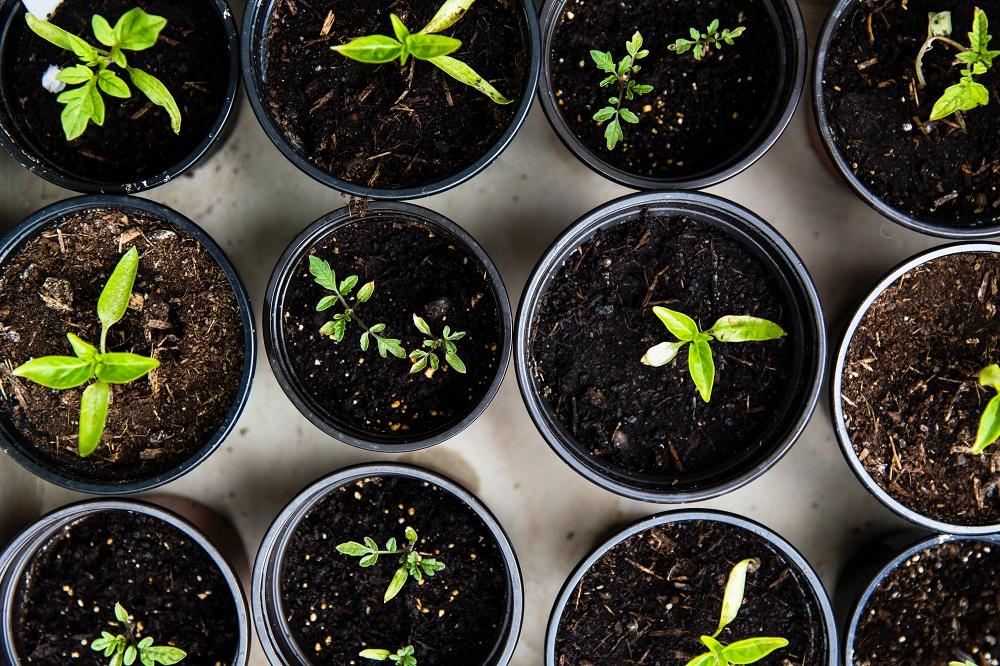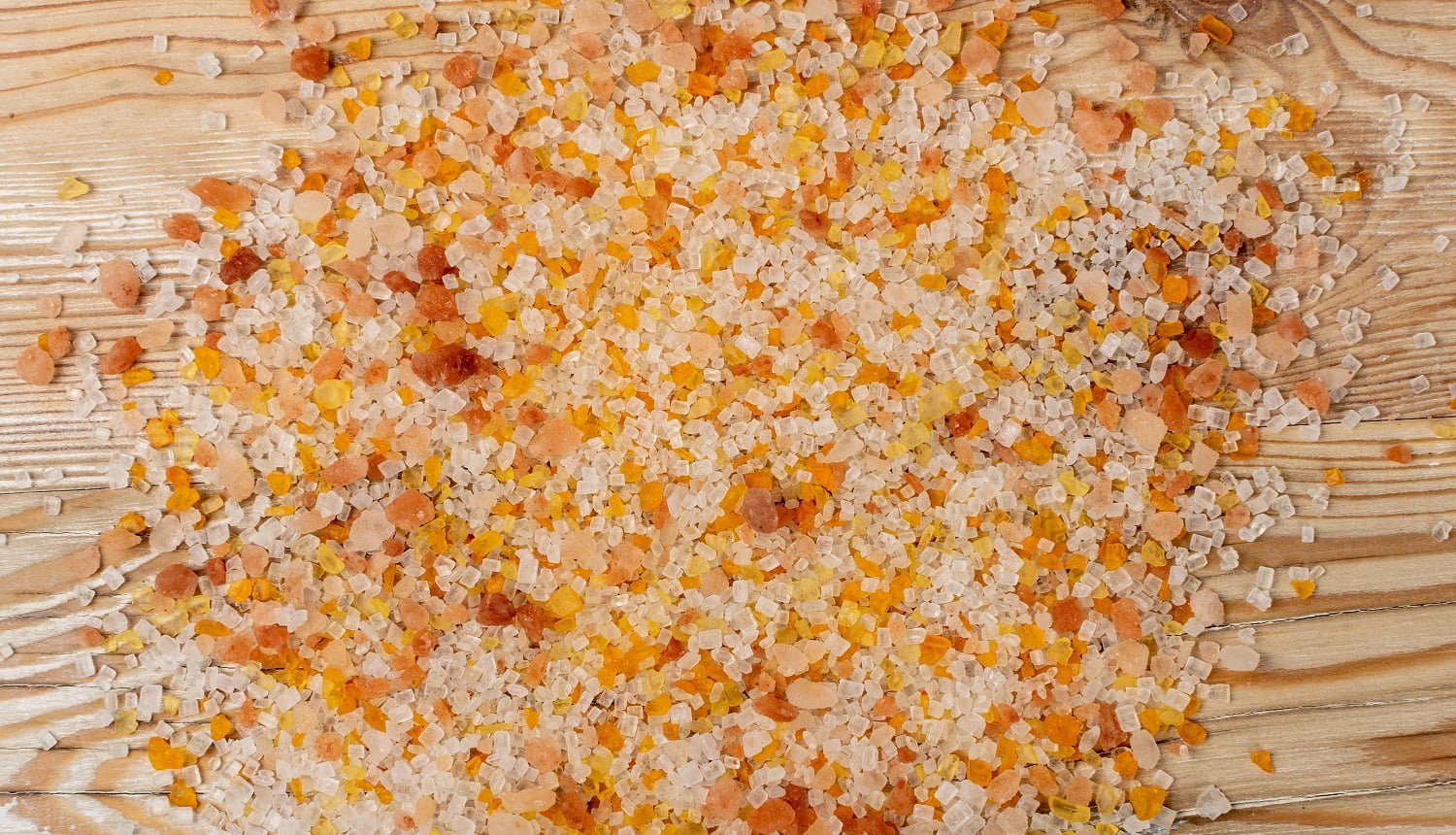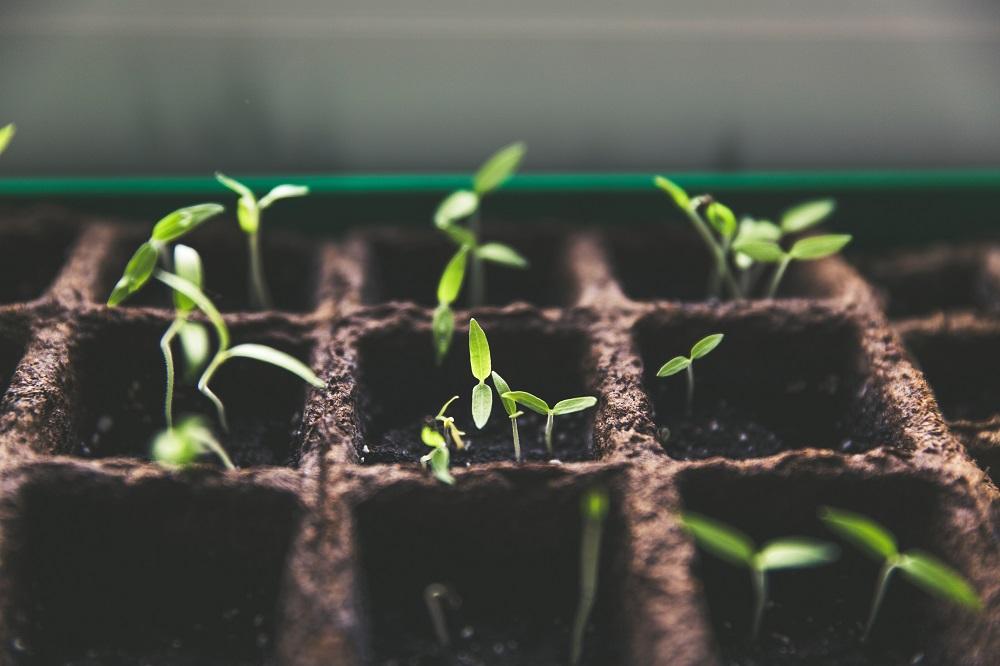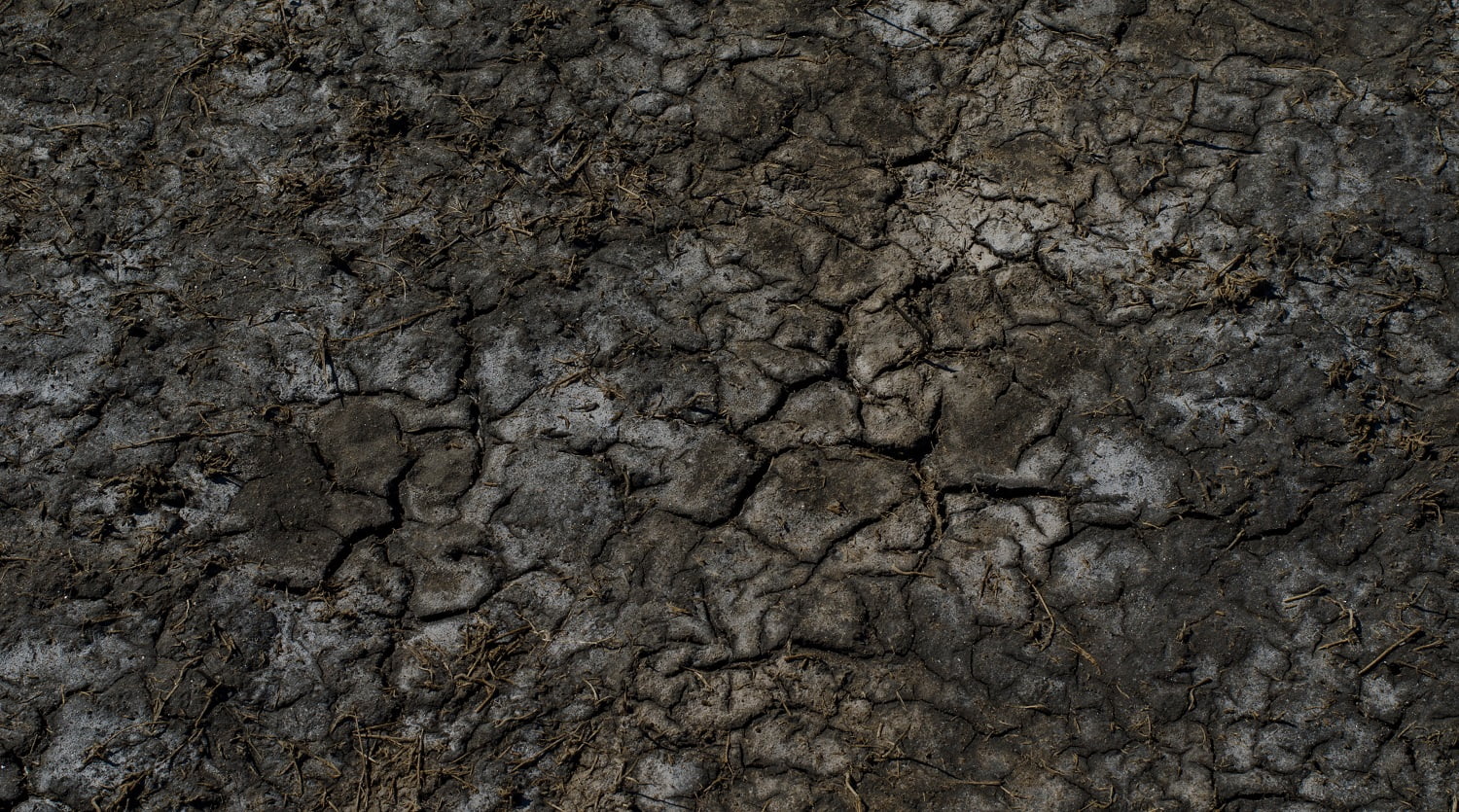Epsom salt is the secret ingredient to greener leaves and fuller blooms. Most of us have heard about it, but not everybody knows how it works.

Now, you don't need to be a chemistry grad to understand the nature and properties of this compound. But a little insight will help you work in the right direction. As gardening enthusiasts, we all want our plants to thrive and attain optimal growth.
But some factors like poor magnesium or sulfur content in the soil, lack of nutrients, weeding, etc., can interfere in the growth stage of plants. That's where Epsom salt comes into the picture, its health-giving white crystals nurturing your plants with much-needed minerals.
Without further ado, let's learn more about this unique ingredient.
Epsom Salt For Greener Gardens

Epsom Salt - A Quick Break Down
Before we discuss the benefits of Epsom salt, let's talk a bit about its composition. This white substance is essentially a mineral compound that works as a superfood for plants and trees. Long story short, Epsom salt or Magnesium Sulphate (MgSO4) is a natural and non-toxic vitalizer that can enhance nutrient absorption and regulate enzymes in plants.
The compound was originally discovered in Epsom and is now a part of a healthy lifestyle for many. For instance, it can help people suffering from magnesium deficiencies and other ailments. However, in this guide, we'll be primarily focusing on its positive impact on plants.
Here, we’d like to mention that even though it looks very much like regular table salt, it does not consist of sodium chloride. In fact, table salt can harm plant life and have a range of other ill-effects.

Advantages Of Epsom Salt In Gardening
-
Boosts The Germination Process
Magnesium is a key mineral that promotes seed germination by providing nourishment and strengthening cells. During this nascent stage, seeds quickly lose sulfur, so it's important to supply them with the essential nutrients.
Mix a tablespoon of Epsom salt in 1 gallon of water and sprinkle the solution on the seed bed. Alternatively, you may add the salt directly to the soil before planting the seeds. If you're growing wildflowers or grass seeds, distribute 1 cup of Epsom salt every 100 sq ft.
Combine it with the soil and water the area generously. Top up the supply by pouring Epsom salt solution on the seedlings each month during the growth stage.
-
Helps Facilitate Transplant
Now, this is something most gardening enthusiasts are familiar with. Any plant, when taken out from its original location and replanted somewhere else, can undergo a shock. This is especially common when you remove overgrown plants from a pot and put them in the garden, yard, or a larger pot.
That said, transplant shock arises due to a disrupted root system and the subsequent failure in root integration. When a plant fails to establish itself, it gradually dies off due to a lack of nutrition and limited water intake. While most plants undergo this shock when replanting or repotting, the right care can help them acclimatize better and faster.
That's where Epsom salt comes in handy, as it helps plants absorb nutrients when they are replanted. Simply put some salt at the bottom of the hole dug for replanting, and you're good to go. Also, make sure to provide your plants with sufficient water and use Epsom salt-infused water for a few months to keep it healthy and thriving.
-
Supplements Nutrient Absorption
Based on scientific evidence, magnesium sulfate helps plants increase overall nutrient absorption, which in turn spurs timely growth. Basically, it supplements cell uptake of essential minerals like phosphorus, nitrogen, and sulfur.
These nutrients play a vital role in root growth as well as foliage density, and ideally, they should be present in soil from the get-go. However, sometimes nutrients can wash out or leach through the ground, thereby causing a deficit and impeding plant growth.
In such cases, we suggest adding Epsom salt as it rejuvenates the plants and provides them with the necessary minerals and vitamins.
-
Helps Produce Greener Leaves
Let's take a trip back to 5th-grade science and talk about the green pigment in plants - chlorophyll. Magnesium is a key mineral that produces chlorophyll needed for photosynthesis. This process is essential for the survival of plants wherein they capture light energy to convert CO2, water, and minerals into organic compounds (food source).
For this to happen, plants and trees largely depend on solar energy, the lack of which can cause yellowing of leaves and a general loss of vitality. Therefore, it's important for plants to receive sufficient sunlight and, at the same time, enough minerals so they can produce much-needed chlorophyll.
Prepare an Epsom salt solution by mixing one 1 tablespoon of the compound in 4 cups of water and spray it directly on the leaves to ensure better magnesium uptake.

-
Enhances Flavors
Epsom salt may not have the same atomic makeup as table salt, but it works as a flavor enhancer in fruit-bearing plants. Prepare a batch of MgSO4 solution by adding 1 tablespoon of the ingredient to 1 gallon of water.
Use it liberally during the growing season and apply it near the roots of trees for the best results. Alternatively, you may sprinkle the salt directly on the soil bed at least 3 times a year. So, whether you're growing nuts, grapes, berries, peppers, or tomatoes, Epsom salt treatment will provide you with flavor-infused fruits.
-
Repels Garden Pests
While Epsom salt is water-soluble, it's quite useful in drier climate areas where minerals are less likely to wash away. Therefore, if you live in such a place, you may distribute the salt across your garden area, especially around plant bases, to repel pests.
MgSO4 is much like Diatomaceous earth in nature, which makes it a natural pest deterrent. So, if you're worried about your plants being attacked by snails and slugs, this is one of the most inexpensive yet effective ways to deal with it.
-
Works As A Fertilizer
You'd be surprised to know that Epsom salt doubles as a fertilizer, especially if you're looking to increase the level of magnesium and sulfur in the soil. There are two ways to do this - you may either mix it with fertilizer and add it to the soil or water your plants with the MgSO4 solution.
The first method works well right after planting, whereas the latter can be used throughout the growth stage. Other than that, you may incorporate the salt into the soil around the plant base using the plant height as a yardstick for measuring the required amount of salt. To explain further, use a tablespoon of Epsom salt per 1 ft of the plant height.
This practice is especially effective in gardens and orchards, where you want a plentiful yield of fruits and flowers. While some plants can tolerate a dip in magnesium and sulfur levels, most cannot, and hence they begin to show signs of nutrient deficiency.
The most common symptom of magnesium deficiency is the yellowing of the leaves. More often than not, the leaf-edges turn yellow, and you can also find a yellow pattern in the center. On the other hand, lack of sulfur causes the yellowing and browning of newer leaves. Either of these anomalies can drastically impact bloom rate and impede growth.
-
Grows Lush Green Lawns
The lack of magnesium in your soil should not stop you from growing a lush green grass pad, and as such, Epsom salt will help you achieve your dream lawn. If you're not sure about how much salt you need to apply, then just follow the recommendation of the Epsom Salt Council.
According to them, 3 lbs of Epsom salt should be spread across an area of 1250 sq ft for the best results. After applying the salt, don't forget to water the area. However, make sure that the minerals do not wash away.
-
Works As A Foliar Spray
By now, you already know that plants can absorb magnesium through leaves. Meaning, you can use Epsom salt solution as a foliar spray to up the magnesium level in plants. This is a care measure that you may undertake throughout the plant's lifetime, thereby ensuring healthy growth and bountiful produce.
Besides, regular application of this foliar spray will help your plants hit growth milestones on time. To make the most out of your solution, mix 1tablespoon of salt to 1 gallon of water and spray it on blooming plants once every month. However, if your plants are prematurely yellowing, it's best to sprinkle the mix directly on the soil.
-
Nourishes Houseplants
Some houseplants get a bad rap for being too sensitive and dying early on despite sufficient care. If you're worried about the same outcome, use Epsom salt to boost their nutrition level. Since it's a pH neutral compound, MgSO4 is gentle on houseplants and can help them reach their full potential.
Mix 2 tablespoons of Epsom salt into 1 gallon of water and apply it directly on the leaves for higher mineral uptake. Or, depending on the plant height, you may add 1 tablespoon of salt per foot to the soil. Ideally, you should administer this mineral compound to your plants every month and note the difference in growth and foliage density.

-
Produces Gorgeous Roses
Epsom salt is a vitalizing agent that benefits both newly-planted and established rose plants. To get the most beautiful blooms, you must add the salt in the hole before planting the roses.
In the case of full-grown rose buses, use the Epsom salt solution, prepared in 1 tablespoon to 1-gallon ratio directly on the leaves. This application is strictly seasonal, so spray the plants once in spring when they start to flower.
-
Aids In Removing Tree Stumps
Depending on the thickness of the tree trunk, removing stumps can turn out to be a costly affair. So, if you don't want to spend several dollars in the stump removal process, use Epsom salt to do it yourself.
It may not be a conventional approach per se but a somewhat effective one that can simplify the process. For starters, you'll have to make multiple holes on the top of the stump using a ½-inch electric drill bit. Keep them a few inches apart and continue drilling till the holes reach half the depth of the tree stump.
After that, pour Epsom salt in the holes and add enough water to moisten the salt grains. Make sure not to saturate the salts. Once you're done with that, cover the tree stump with a waterproof material to keep out rain and moisture while it cures. Eventually, the MgSO4 will dehydrate the stump and kill the living cells.
When that happens, you can easily ax off most of the stump and dig up the entire root system underneath the soil.
-
Eradicates Weed
While MgSO4 nourishes all types of vegetation, it has proved to be an excellent weed eliminator when combined with other substances. Simply add 2 cups of Epsom salt and 1 cup of dish soap to 1 gallon of white vinegar.
Spray the mixture on weed-infested areas, and soon enough, the unwanted growth will start to wilt. However, if you want to stop them from reclaiming the soil, heat the solution, and then sprinkle it across the area. Doing so will attack the roots and prevent weeding in the long run.
How To Use Epsom Salt With Flowering Plants
Epsom salt is the key to fuller buds and perky blooms. So, if you want your flowering plants to reach their full potential, make sure to throw in some MgSO4 in the mix. More often than not, flowers experience magnesium deficiency during the blooming process.
Therefore, we recommend using a foliar spray or a watering solution regularly to lengthen the flowering cycle. Also, it helps plants to rebloom faster so you can enjoy plentiful blossoms throughout the season.
Besides, if you're growing continual bloomers, administering Epsom salt ensures richer green pigment and bigger crowns. As mentioned earlier, magnesium increases the production of chlorophyll in plants. As a result, the plants thrive, providing higher yields every flowering season.
For optimal use, follow this application technique: once a year, mix Epsom salt into the soil surrounding the flowering plant. Top it up with a batch of dissolved salts when the new vegetation crops up.
How To Use Epsom Salt With Vegetable Plants
In general, Epsom salt can benefit the majority of vegetable plants, but it particularly works wonders for tomatoes and peppers. This is mainly because both these plants are naturally deficient in magnesium.
In tomatoes, MgSO4 prevents rots, and that goes for squash varieties as well. Other than that, it enables plants to establish a deeper root system and produce a higher yield. Incorporate the salt into the soil while planting the veggies so they can access the necessary minerals from the get-go.
After that, keep spraying the plants with the salt solution every two weeks or so, to provide them with a consistent supply. You may also administer a foliar spray but be careful not to dampen the leaves too much.

Final Words
That's all, folks.
We hope this elaborate guide has been able to provide you with enough information on Epsom salt and its varied applications in gardening. But before you go ahead and buy your own supply of this nourishing compound, here's some advice.
When you're purchasing Epsom salt for your vegetation, buy only those brands which are rated as agriculture-grade. That said, agriculture grade MgSO4 is meant for outdoor and plant-use only and not suitable for human consumption.
In case you want to include this salt in your diet, buy something which is FDA and USP-approved and hence suitable for intake. Other than that, these salts have laxative properties, so be careful to avoid contamination, and keep the stuff away from pets.
Furthermore, make sure to wear protective gloves while preparing a salt solution or mixing it with soil. Since magnesium-sulfate can be absorbed through the skin, avoid contact at all costs. On that note, we'd like to take your leave.
Bye for now!
